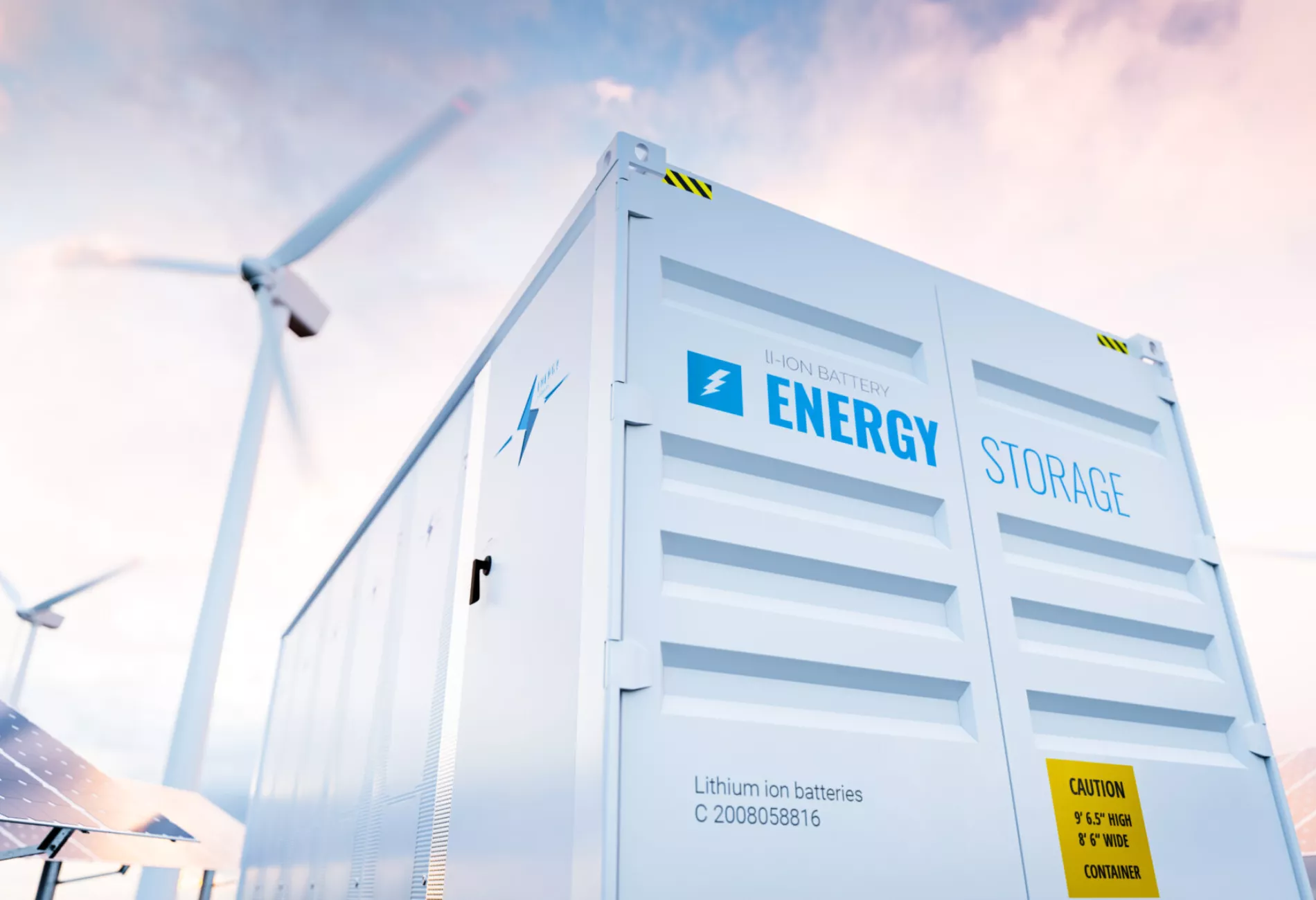Grid congestion and the limited flexibility of the energy system are slowing down the development of renewable energy projects. This calls for smart solutions that balance production, consumption, storage capacity, and grid load. Energy storage is an essential building block in this context. What is necessary to ensure that projects can be developed, and how can we keep the energy transition moving forward? In this interview, Maarten Jaspers Faijer, Senior Consultant Renewable Energy at Pondera, shares his views on the opportunities and challenges regarding energy storage.
Can you tell us something about your background and your path to Pondera?
Can you tell us something about your background and your path to Pondera? I studied public administration at Erasmus University Rotterdam. After graduating, I started as a trainee at the Ministry of Transport and Water Management, where I worked in various policy positions for three years. Although I gained a lot of valuable experience with national and international policy issues, I found that I missed the hands-on work and team spirit of a small team.
In 2012, I joined Pondera, which was at the time a small consultancy firm with eight consultants. Together with my colleagues, we pioneered the energy transition, particularly in the development of large-scale wind energy projects. From this cohesive team, Pondera has grown into the company it is today. And we continue to carry out projects that really make a difference, both locally and nationally, with the same level of commitment.
What kind of projects are you working on?
Pondera is an entrepreneurial organisation where colleagues actively contribute to new developments, such as innovative solutions for energy storage. In this dynamic field, I work with developers to realise battery storage projects. These range from large-scale systems with more than 500 MW of power and 2,000 MWh of capacity to smaller, so-called co-located batteries at existing solar or wind farms. This variation is what makes the work so exciting. In addition to these projects, I am also involved in the Energiepark Daarle and work on geothermal projects for Pronewable Development.
What is the most exciting and challenging project you have worked on?
I have worked on several challenging projects, each in their own way. A special moment was in 2014, when I was part of the construction team for the fourth Dutch offshore wind farm: Luchterduinen. A completely different challenge followed during the coronavirus pandemic, when we were asked to draw up the National Energy Infrastructure Programm and the related integrated impact analysis. This extensive policy process on the spatial integration of the future national energy system was complex in every way. Together with CE Delft and BRO, we achieved a strong result that we can be proud of.
What do you see as the biggest challenge in energy storage at the moment?
The question seems to suggest the answer, but I have to disappoint you: energy storage is not the biggest challenge in the energy transition — nor is grid congestion. In my opinion, the real challenge is maintaining the momentum that characterised the energy transition until a year ago. It is crucial that the transition continues to develop in an inclusive manner (so without exclusion) and that energy remains affordable for everyone.
Why is energy storage so important in the energy transition?
Energy storage plays a crucial role in accelerating the energy transition. Without storage, many developments would become possible only in five to seven years' time. Thanks to smart storage solutions, we can already take steps now that would otherwise take years to achieve. This keeps the transition on track and ensures that investments in renewable energy remain attractive. In recent years, the focus has mainly been on generating renewable energy. However, with increasing grid congestion, attention is shifting more and more to transport and storage. This is a logical and necessary development. At the same time, it is important that demand for electricity also grows. That is the way to create a healthy energy market.
Hydrogen is mentioned in many scenarios as a solution to boost this demand. However, the promised hydrogen economy is still a long way off and is not expected to fully develop in the next five years. Expectations in recent years have been simply too high. Nevertheless, it is important that the government stays on track. The current preparations and investments are essential, provided they are accompanied by a sense of realism. Only in this way can we build a future-proof energy system, step by step.
Energy storage is a broad concept. Which forms of storage do you think are the most promising for the coming years, and why?
Energy storage may sound like a broad concept, but it is quite simple: it involves storing energy so that it can be used at a later point. The aim is to better align supply and demand. What makes it complex are the different forms in which energy is stored, the techniques involved and the energy markets that are served by it. For example, you can store electricity through chemical reactions, using gravity, or by physically storing energy carriers in underground cavities: think of gas storage or heat storage in the ground.
Each form of storage has its own applications. For example, lithium-ion batteries are now well known and widely used for short-term storage. However, not as widely known are FLOW batteries, which are more suitable for longer-term storage. Both types of work based on chemical reactions but serve different markets. Lithium-ion batteries are already well established and active in both the arbitrage market (where price differences over time are exploited) and the balancing market (where services are provided to grid operators). FLOW batteries are not yet in widespread use, but this is expected to change in the coming years. They are particularly interesting for the arbitrage market, where they are used less frequently but deliver larger amounts of energy at a time. This makes them suitable for supporting the energy market at times when demand exceeds the supply of renewable energy for long periods.
What are the main technical or regulatory bottlenecks in large-scale energy storage?
Ironically, grid congestion – the problem that we want to solve with large-scale energy storage – is also the biggest obstacle to its realisation. In practice, these two factors keep each other in place. This is mainly due to the current laws and regulations that grid operators must comply with. Fortunately, grid operators are being given more room to prioritise desirable developments. However, it is not always clear exactly what those developments are. The role of grid operators is evolving whereas they used to mainly facilitate grid congestion has suddenly given them a much more crucial position. This also changes the dynamics of cooperation with local authorities and other stakeholders. It creates a complex situation that sometimes makes it hard to develop projects at the local level. There is a need for clearer rules, so that all parties know where they stand and we can move faster together towards a future-proof energy system.
What do you think is the role of energy storage in grid congestion challenges?
As mentioned earlier, energy storage is essential for solving grid congestion. But paradoxically, it is also part of the problem at the moment. Since around 2020, grid operators have received a huge number of applications for battery storage. Many of these projects will probably never be realised, but they are on the waiting list for a grid connection.
Grid operators are hardly allowed to differentiate between applications, which means that even less promising projects must be treated as worthy. This hinders the progress of initiatives that are feasible and desirable.
This is where local authorities have an important role to play as spatial planners. They have a good overview of which locations are suitable for large-scale battery storage and which are not. As was previously done for wind and solar projects in the Regional Energy Strategies, or through the PMIEK (Provincial Multi-Year Programme for Infrastructure, Energy and Climate), local authorities can guide the development of energy storage. In this way, we ensure that the available space and grid capacity are used as efficiently as possible.
There is a lot of discussion about the sustainability of batteries themselves. What is your view on the environmental impact of batteries and the opportunities for circularity or reuse?
The production of lithium-ion batteries in particular has a significant environmental impact. That is why it is important to always carry out a lifecycle assessment when developing and using batteries: an analysis of the entire lifecycle, from obtaining raw materials to reuse or recycling. An important point of attention is the type of cathode used. Fortunately, considerable progress has already been made in reducing the use of, for example, cobalt, a raw material with a high ecological and social impact. It is essential that this trend continues. In addition, the lifespan of batteries plays a major role. The longer a battery can be used safely, the more sustainable the system. Different applications have different requirements: for example, a battery for electric driving must meet different conditions than a home battery.
Electrification actually helps in this regard. A battery that is no longer suitable for an electric car can often still serve perfectly well as a home battery – as long as it is refurbished safely. This creates a promising route for reuse and circularity, giving batteries a second life in a different application.
Want to know what we can do for your project? Feel free to contact us using the contact form. We would be happy to explore the possibilities with you.


